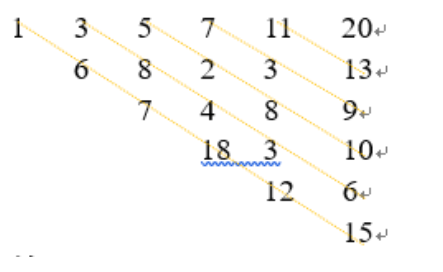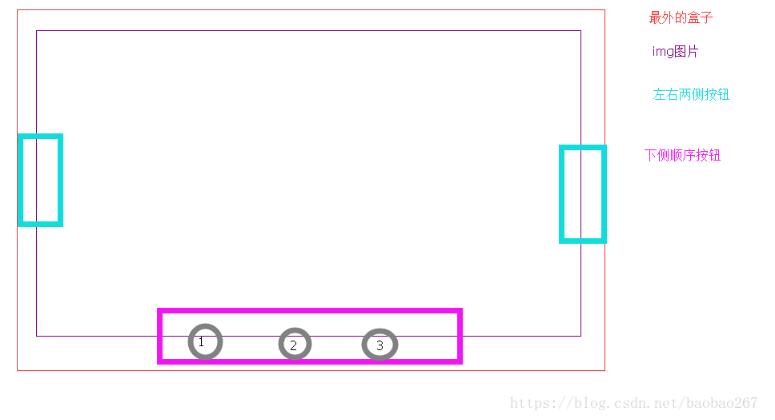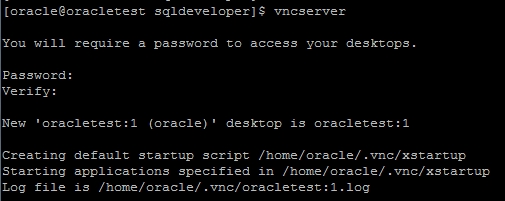【并发编程】ReentrantReadWriteLock 源码分析
前言
Github:https://github.com/yihonglei/jdk-source-code-reading(java-concurrent)
一 ReentrantReadWriteLock 概述
ReentrantReadWriteLock 基于AQS 实现的读写锁,应用于读多写少的场景。
1、写锁(互斥锁)

1)判断是否已经存在锁,如果有锁,判断是否是重入锁,是,加锁成功,否则加锁失败,基于当前线程构建独占式节点进入等待队列,
线程挂起,等待被唤醒尝试重新获取锁;
2)如果无锁,尝试加锁,加锁成功返回,否则基于当前线程构建独占式节点进入等待队列,线程挂起,等待被唤醒尝试重新获取锁;
2、读锁(共享锁)

1)判断是否有写锁,如果存在写锁,基于当前线程构建共享式节点进入等待队列,线程挂起,等待被唤醒尝试重新获取锁;
2)尝试获取锁,如果获取锁失败,基于当前线程构建共享式节点进入等待队列,线程挂起,等待被唤醒尝试重新获取锁;
二 ReentrantReadWriteLock 实例
package com.jpeony.concurrent.locks.reentrantreadwritelock;import java.util.concurrent.locks.ReadWriteLock;import java.util.concurrent.locks.ReentrantReadWriteLock;/*** 写锁(互斥锁):当有读或写锁,不能加写锁,进入队列等待;* 读锁(共享锁):当有写锁,不能加读锁,进入队列等待;* @author yihonglei*/public class ReentrantReadWriteLockSimple {private final static ReadWriteLock lock = new ReentrantReadWriteLock();public static void main(String[] args) {Thread writeThread = new Thread(new WriteTask());Thread readThread1 = new Thread(new ReadTask1());Thread readThread2 = new Thread(new ReadTask2());// writeThread.start();readThread1.start();readThread2.start();}private static class WriteTask implements Runnable {@Overridepublic void run() {try {System.out.println("写-WriteTask-lock");lock.writeLock().lock();System.out.println("写-WriteTask-start");Thread.sleep(10000);System.out.println("写-WriteTask-end");} catch (InterruptedException e) {// ignore} finally {lock.writeLock().unlock();}}}private static class ReadTask1 implements Runnable {@Overridepublic void run() {try {System.out.println("读-ReadTask1-lock");lock.readLock().lock();System.out.println("读-ReadTask1-start");Thread.sleep(5000);System.out.println("读-ReadTask1-end");} catch (InterruptedException e) {// ignore} finally {lock.readLock().unlock();}}}private static class ReadTask2 implements Runnable {@Overridepublic void run() {try {System.out.println("读-ReadTask2-lock");lock.readLock().lock();System.out.println("读-ReadTask2-start");Thread.sleep(1000);System.out.println("读-ReadTask2-end");} catch (InterruptedException e) {// ignore} finally {lock.readLock().unlock();}}}}
启动 writeThread 和 readThread1 可以测试 加写锁未释放,这个时候加读锁被阻塞,直到写锁释放,读锁才能获取成功;
启动 readThread1 和 readThread2 可以测试 读锁共享的特性,可以感受在线程加读锁未释放时,别的线程也可以加读锁成功;
启动 readThread1 和 writeThread 调下顺序,并调整读线程 sleep 时间,通常情况下可以按顺序执行,也可以控制执行顺序,
可以看到读锁加锁时,写锁被阻塞;
也可以增加多个写线程,测试写锁互斥被阻塞。
三 ReentrantReadWriteLock 源码分析
1、构造方法
默认fair 是 false,为非公平锁,如果想用公平锁,fair 传 true。
public ReentrantReadWriteLock(boolean fair) {sync = fair ? new FairSync() : new NonfairSync();readerLock = new ReadLock(this);writerLock = new WriteLock(this);}
ReentrantReadWriteLock 实现了 WriteLock 和 ReadLock,共享 valatile 的 state 资源。
2、如何实现加写锁互斥?
public final void acquire(int arg) {// 加锁if (!tryAcquire(arg) &&// 加锁失败,构建独占式节点进入队列,线程挂起,等待被唤醒尝试重新获取锁acquireQueued(addWaiter(Node.EXCLUSIVE), arg))selfInterrupt();}protected final boolean tryAcquire(int acquires) {/** Walkthrough:* 1. If read count nonzero or write count nonzero* and owner is a different thread, fail.* 2. If count would saturate, fail. (This can only* happen if count is already nonzero.)* 3. Otherwise, this thread is eligible for lock if* it is either a reentrant acquire or* queue policy allows it. If so, update state* and set owner.*/// 获取当前线程Thread current = Thread.currentThread();// 获取共享资源int c = getState();int w = exclusiveCount(c);// c 大于 0,说明这个时候有已经存在读锁或写锁,不进行加锁操作if (c != 0) {// (Note: if c != 0 and w == 0 then shared count != 0)// 如果不存在写锁 或 不是重入锁,返回加锁失败if (w == 0 || current != getExclusiveOwnerThread())return false;// 如果是重入锁,判断重入次数是否大于最大次数,异常则返回if (w + exclusiveCount(acquires) > MAX_COUNT)throw new Error("Maximum lock count exceeded");// Reentrant acquire// 重入锁 state 加 1,返回成功setState(c + acquires);return true;}// 加锁操作,writerShouldBlock 如果非公平,返回 false,如果是公平需要判断// 等待队列头结点是不是当前线程,不是返回 false,因为要保证公平的顺序性,// CAS 操作加锁状态if (writerShouldBlock() ||!compareAndSetState(c, c + acquires))return false;// 写锁是独占的,构建独占线程setExclusiveOwnerThread(current);return true;}
3、如何实现读锁共享加锁?
public final void acquireShared(int arg) {// 加锁if (tryAcquireShared(arg) < 0)// 获取失败,构建共享式节点进入队列,线程挂起,等待被缓存尝试重新获取锁doAcquireShared(arg);}protected final int tryAcquireShared(int unused) {/** Walkthrough:* 1. If write lock held by another thread, fail.* 2. Otherwise, this thread is eligible for* lock wrt state, so ask if it should block* because of queue policy. If not, try* to grant by CASing state and updating count.* Note that step does not check for reentrant* acquires, which is postponed to full version* to avoid having to check hold count in* the more typical non-reentrant case.* 3. If step 2 fails either because thread* apparently not eligible or CAS fails or count* saturated, chain to version with full retry loop.*/Thread current = Thread.currentThread();// 获取共享资源int c = getState();// 判断是否有独占线程,即是否有写锁存在,如果有,返回获取锁失败if (exclusiveCount(c) != 0 &&getExclusiveOwnerThread() != current)return -1;// 获取锁并返回int r = sharedCount(c);if (!readerShouldBlock() &&r < MAX_COUNT &&compareAndSetState(c, c + SHARED_UNIT)) {if (r == 0) {firstReader = current;firstReaderHoldCount = 1;} else if (firstReader == current) {firstReaderHoldCount++;} else {HoldCounter rh = cachedHoldCounter;if (rh == null || rh.tid != getThreadId(current))cachedHoldCounter = rh = readHolds.get();else if (rh.count == 0)readHolds.set(rh);rh.count++;}return 1;}return fullTryAcquireShared(current);}
4、写锁释放锁?
public final boolean release(int arg) {// 释放锁成功if (tryRelease(arg)) {Node h = head;// 如果头结点是即将被唤醒的线程,直接进行唤醒操作尝试获取锁if (h != null && h.waitStatus != 0)// 唤醒线程unparkSuccessor(h);return true;}return false;}protected final boolean tryRelease(int releases) {if (!isHeldExclusively())throw new IllegalMonitorStateException();int nextc = getState() - releases;boolean free = exclusiveCount(nextc) == 0;// 释放独占对象引用if (free)setExclusiveOwnerThread(null);// 释放共享资源状态,减 1setState(nextc);return free;}
5、读锁释放锁?
public final void acquireShared(int arg) {// 释放共享锁if (tryAcquireShared(arg) < 0)// 唤醒队列线程尝试获取锁doAcquireShared(arg);}protected final boolean tryReleaseShared(int unused) {Thread current = Thread.currentThread();if (firstReader == current) {// assert firstReaderHoldCount > 0;if (firstReaderHoldCount == 1)firstReader = null;elsefirstReaderHoldCount--;} else {HoldCounter rh = cachedHoldCounter;if (rh == null || rh.tid != getThreadId(current))rh = readHolds.get();int count = rh.count;if (count <= 1) {readHolds.remove();if (count <= 0)throw unmatchedUnlockException();}--rh.count;}// 每次释放锁,共享资源减1for (;;) {int c = getState();int nextc = c - SHARED_UNIT;if (compareAndSetState(c, nextc))// Releasing the read lock has no effect on readers,// but it may allow waiting writers to proceed if// both read and write locks are now free.return nextc == 0;}}
四 总结
1)ReentantReadWriteLock 基于 AQS 实现,内部读写锁共同使用 valatile state 共享资源实现了 WriteLock(写互斥) 和 ReadLock (读共享)的逻辑;
2)用于读多,写少的场景,如果写很多,还不如用 ReentrantLock,也是基于 AQS 模板方法实现的,加锁和解锁实现简单,性能更高;
3)理解了中心思想,内部很多实现细节可以参考 AQS 去抠;


























![sublime text3 提示[WinError 2] 系统找不到指定的文件 sublime text3 提示[WinError 2] 系统找不到指定的文件](https://image.dandelioncloud.cn/images/20221021/7c2d64239b9e47b8999ee78cb4480121.png)







还没有评论,来说两句吧...